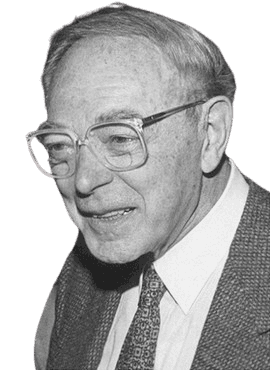Life and achievements
Early life
Zellig Harris was born on October 23, 1909, in Balta, a part of the Russian Empire, now Ukraine. His family moved to Philadelphia, Pennsylvania, in 1913 when he was four. Born Jewish, Harris was influenced by Jewish learning as well as socialist ideas that were present in his childhood home.
Harris emigrated to Palestine at 13 and began working to support himself; he became active in socialist organizations, especially on the kibbutzim. In Palestine, he was able to observe how language, culture, and power structures worked, topics on which he would later research extensively in linguistics.
Harris returned to the United States in the late 1920s for further study at the University of Pennsylvania. He first took up Semitic languages and finished his doctoral thesis on the grammar of Phoenicians in 1934.
While initially interested in the use of language in the ancient world, he quickly shifted to the scientific analysis of language. His work during the early 1930s and 1940s attempted to establish formal procedures for studying linguistic structure based on observation rather than intuition.
At this time, he was exposed to the structuralist theories of Leonard Bloomfield and Edward Sapir, two prominent linguists of America. But Harris looked further than this, for he aimed at establishing a method by which all the languages could be systematically studied, the old and the new.
Legacy
Zellig Harris significantly impacted linguistics, discourse analysis, and computational linguistics. He is, however, most famous for having devised techniques that enabled the scientific and mathematical analysis of language variation and structure. His work in structural linguistics provided the basis for the field's shift in the 20th century.
It helped his students and future generations of linguists and computer scientists. One of the most critical ideas that Chomsky borrowed from him was the concept of transformational structure in language, which he incorporated into his generative grammar theory, a theory that revolutionized linguistic science in the twentieth century.
Harris's work on sublanguages and scientific language inspires many researchers, especially in computational linguistics and NLP. His concentration on particular languages, the languages of science and technology in particular, has given the framework for describing the role of language in given settings.
This work has been applied to developing tools for information retrieval, machine translation, and language generation systems. Most notably, his contributions to the Linguistic String Project at New York University under the direction of Naomi Sager aided early natural language processing technologies.
Harris also contributed to political theory by actively participating in socialist activities and writing about the change in capitalist society. His posthumous book, The Transformation of Capitalist Society, testifies to his lifelong passion for social reform and the use of scientific methods in solving social issues.
His dream of a society based on cooperation and mutual assistance instead of profit still captures the imagination of scholars in the field of linguistics and political science.
Milestone moments
Oct 23, 1909
Birth of a Linguistic Pioneer
Zellig Harris was born in Balta in the Russian Empire, now Ukraine. His family immigrated to the United States in 1913 and settled in Philadelphia. His youth was formed by his acquaintance with Jewish enlightenment and his teenage stay in Palestine.
His early years in Palestine exposed him to socialism and the lifestyle practiced in the kibbutz form of community living. They also made him develop a fascination with language as a social and cultural construct.
Harris's early experiences communicating with people of different languages, cultures, and political views influenced his work in linguistics, which focused on the link between language, society, and information.
Apr 17, 1934
Academic Foundations
Harris received his undergraduate, graduate, and doctorate degrees from the University of Pennsylvania, where he specialized in Semitic languages. He formally began his academic work in 1934 when he wrote his doctoral dissertation on Phoenician grammar.
While Harris started as an archaeologist with a particular focus on ancient languages, his initial studies showed a concern with the form and function of language. His work during this period laid the groundwork for his subsequent turn toward structural linguistics and discourse analysis.
These early academic experiences were formative in Harris's approach to linguistics, which embraced historical philology, scientific methods, and data analysis.
Nov 13, 1946
Establishing the Linguistics Department at the University of Pennsylvania
In 1946, Zellig Harris founded the first genuinely modern linguistics department in the United States at the University of Pennsylvania. This was a turning point in the institutionalization of linguistics as a science.
Linguistics at Penn flourished under Harris's leadership; the Linguistics Department was soon recognized as an international hub for structural linguistics research. The department's empirical orientation and reliance on formal methods corresponded to Harris's vision of linguistics as a science.
The establishment of the department started Harris's career as a teacher of the young generation of linguists, including Noam Chomsky, who introduced the theory of generative grammar.
Jul 28, 1951
Publications in Methods of Structural Linguistics
In 1951, Methods in Structural Linguistics was released by Harris, which outlined the author's perspective on the analysis of language. The book also stresses the need to use formal ways and positivism in studying language structure.
Methods in Structural Linguistics, published in the mid-20th century, became a standard work for linguists and made Harris one of the structural linguists. The book's concerns with distributional analysis and string theory contributed to the future of linguistic and computational language processing.
Harris's work on structural linguistics progressed further in the subsequent decades, yet Methods in Structural Linguistics is still one of the author's most significant works.
